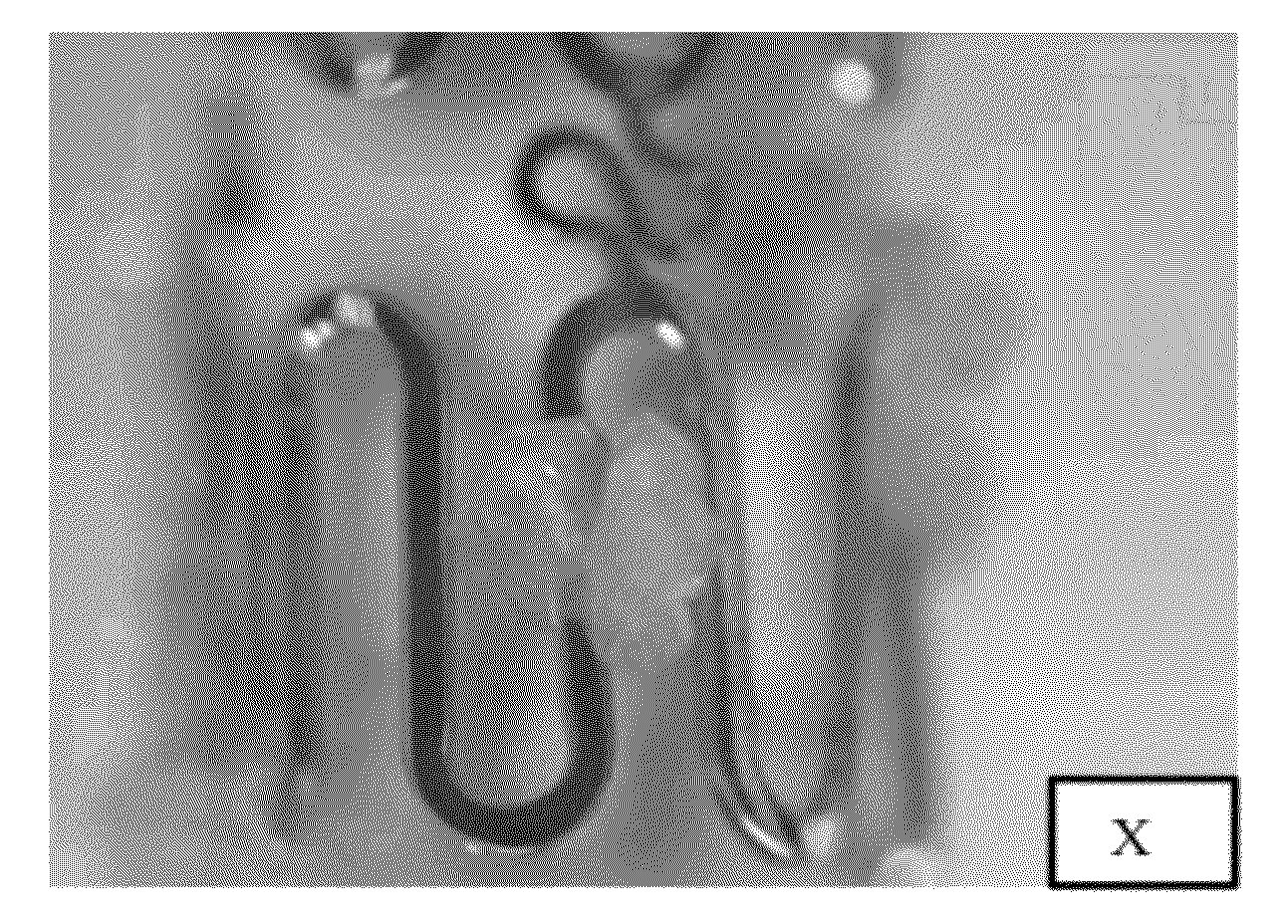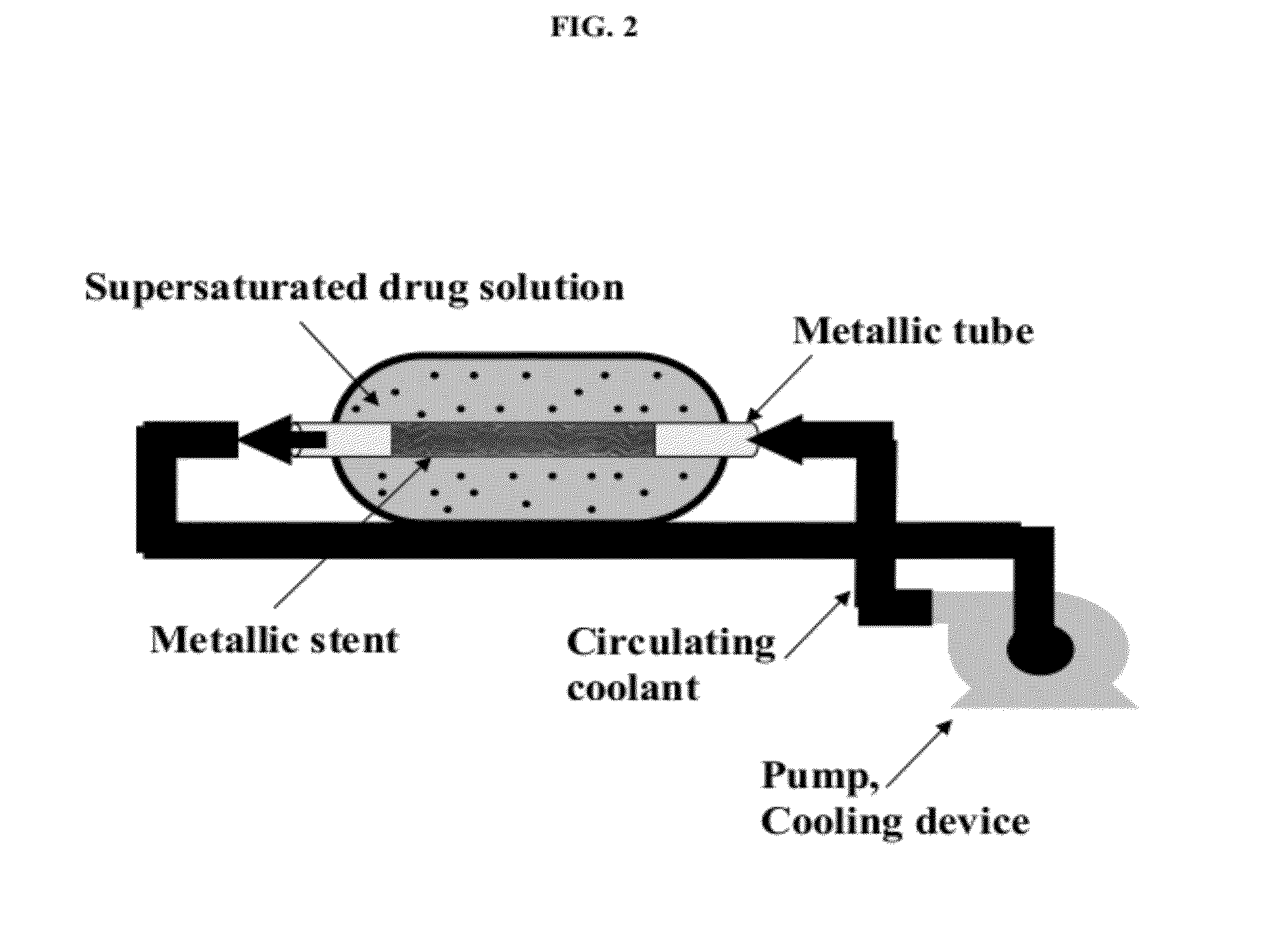Crystalline drug-containing coatings
a technology of drug-containing coatings and crystallized drugs, which is applied in the field of surface, can solve the problems of incomplete release of loaded drugs, adverse side effects and complications, and difficulty in controlling the process, and achieves the effects of preventing the drug from being released
- Summary
- Abstract
- Description
- Claims
- Application Information
AI Technical Summary
Problems solved by technology
Method used
Image
Examples
example 1
Drug Deposition Kinetics in a Supersaturated Solution
[0396]Solutions with various quantities of rapamycin were prepared, and spontaneous sedimentation and / or crystallization onto the walls of the vessel was examined as a function of time at various temperatures.
[0397]0.1, 3 or 15 mg of rapamycin were dissolved in 1 ml of ethyl acetate, and 20 ml of n-hexane was then added slowly at a rate of 0.5 ml / minute using a syringe pump. The system was kept at a constant temperature (0, 15 or 30° C.). Aliquots of 1 ml were taken after 1, 3 and 6 hours and the concentration of rapamycin remaining in solution was determined by HPLC.
[0398]As shown in FIG. 1, the rate of deposition of crystalline rapamycin was highest at low temperature (i.e., 0° C.) for any given concentration, and at high concentration (i.e., 15 mg) of rapamycin for any given temperature.
[0399]These results indicate that low temperature and high concentration are driving forces for deposition.
example 2
Static System for Deposition from a Supersaturated Solution
[0400]Rapamycin was dissolved in 1 ml of ethyl acetate (room temperature) in a small vial and removed to a glass tube located in an ice bath at 0° C. To this tube, 20 ml of n-hexane were added at a rate of 0.5 ml / minute using a syringe pump. The hexane was directed to the wall of the vessel to avoid droplet formation. The prepared solution was then transferred to a 40 ml chemical glass for deposition on a stent.
[0401]The stent was placed on a 2.7 cm long, 1.6 mm diameter, hollow stainless steel rod that was connected to a closed system of pipes. The pump passed coolant (n-hexane) at rate of 10 ml / minute from a vessel with the coolant, through the rod and back to the vessel. The pipes between the pump and the rod were placed in a Dewar flask with dry ice and acetone, at −78° C. The stent was first immersed in the pre-prepared solution and the pump was then operated. When the process time was finished, the pump was stopped and...
example 3
Effect of Deposition Process on Crystallinity
[0416]The crystallinity of rapamycin deposited on CrCo stents was determined using X-ray diffraction (XRD). The results of four processes for depositing rapamycin were compared.
[0417]Process A:
[0418]Stents were seeded with rapamycin crystals crushed using a mortar and pestle, by sonicating the stent 3 times with 500 μg of the crushed crystals in 500 μl n-hexane for 5 minutes, with 1 minute intervals. A solution of 15 mg rapamycin in 1 ml ethyl acetate and 20 ml hexane was then deposited as described in Example 2 hereinabove, for 30 minutes, with a coolant flow rate of 10 ml / minute.
[0419]Process B:
[0420]1% (weight / volume) rapamycin dissolved in ethyl acetate was spray-coated onto the stent.
[0421]Process C:
[0422]Same as Process A, but followed by an additional incubation of the stent in the solution at room temperature for 120 minutes.
[0423]Process D:
[0424]Same as Process A, except that 3 mg rapamycin was used instead of 15 mg, coolant flow...
PUM
| Property | Measurement | Unit |
|---|---|---|
| diameter | aaaaa | aaaaa |
| diameter | aaaaa | aaaaa |
| diameter | aaaaa | aaaaa |
Abstract
Description
Claims
Application Information
 Login to View More
Login to View More - R&D
- Intellectual Property
- Life Sciences
- Materials
- Tech Scout
- Unparalleled Data Quality
- Higher Quality Content
- 60% Fewer Hallucinations
Browse by: Latest US Patents, China's latest patents, Technical Efficacy Thesaurus, Application Domain, Technology Topic, Popular Technical Reports.
© 2025 PatSnap. All rights reserved.Legal|Privacy policy|Modern Slavery Act Transparency Statement|Sitemap|About US| Contact US: help@patsnap.com



